When I received Greg Travers "Tying Tip" I was at a loss. I knew
nothing about Tube Flies, or the process of creating them. So I asked Al
Campbell for some assistance in explaining Greg's letter. Al Campbell came
through with his narrative (Al, always comes through, if you have a
question), so I have included the narrative in brackets following Greg's
explanation. Then I went out on the Internet, searching for Tube Flies. Two
sites I found Nordic Way Tube Flies, and Derrick's Pike Pages, are must see
sites (links to these two sites at bottom of this article).
Here is what I found out. Tube Flies are a great way to create
Streamers, for Freshwater and Saltwater Fly Angling. They are easy to make
and are fun to do. The possibilities are endless on the creativity
possible with this style of tying.
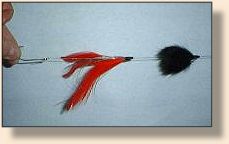
Here's a tip. I like to tie a lot of tube flies; I use the standard
Q-tip tubes by taking them and melting the ends. [He takes a plastic stem
Q-Tip and cuts the fuzzy ends off, then melts the plastic ends a little so
they flare.]
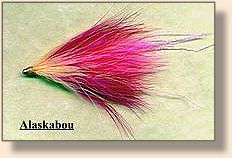
But trying to tie them is a hassle. Traditionally they were tied on a
large salmon iron. [Scottish for salmon hook.]
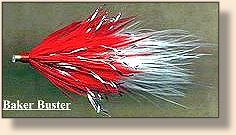
Salmon irons were blind eye so this wasn't a problem. [Blind eye means it
doesn't have an eye but rather a bump at the end of the hook.]
But most salmon hooks used for fishing come with the eyes already formed.
I would hate to have to cut off the eye of what usually are expensive hooks
especially in the size needed to tie a tube fly on, and blind eye hooks are
too expensive for this purpose. So I came up with a solution.
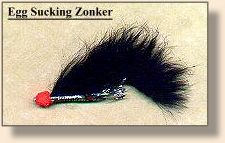
I take a large sized paper clip and bent it straight with a pair of
needle-nose pliers. [Here the paper clip is secured in the vise like a hook
would be. The tube is slid onto the shaft of the paper clip and a rounded
type of fly is tied on the tube.]
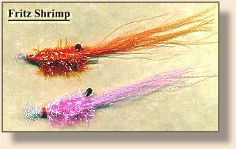
I then wrapped the shank with two or three layers of thread. With the
added bulk of the thread the tube fits snuggly on the paper clip and doesn't
spin while I tie on the tube. I hope this can be of some use to you. ~ Greg
Travers
[The tube is slid over the paperclip that is wrapped with thread. The
thread is snug enough that the tube won't turn when tying so a proper tube
fly can be tied. To use a tube fly, you thread the tippet through the tube
and tie it to a treble or double-hook, then fish the combination as a
fly.] ~Al Campbell
I wish to thank, Bob Kenly at
Nordic Way Tube Flies (https://tubetyer.tripod.com/mysite00/), for the color photos of
the various tied tube flies. A must see site, you really should visit.
I also wish to thank, Derrick (Mr. Pike) Rothermel at
Derrick's Pike Pages
(https://www.ocis.net/~mrpike/), for permission to use the photo of the
tube and hook assembly. Another must see site, you really should visit.
Derrick has many articles (with illustrations) on the complete process of
tying tube flies. ~ Parnelli
Please check out the Fly Tying Section, on the
Bulletin Board, on FAOL too.
If you have any questions, tips, or techniques; send them along.
Someone else thought up most of this material before we did,
they just forgot to tell anyone about it. Or else we just
forgot about it, while learning something else. Let us
share with each other, all the things we know!
~ Steven H.
McGarthwaite (Chat Room AKA Parnelli)
|











